Prepare as many patches as students. Choose animals that the students know and write one animal on each note (you can of course also have a picture).
Each pupil is then given a clothespin and a patch with an animal on. The patch should not be displayed to anyone else. Everyone attaches a patch to the neck of someone else in the group so everyone has a patch in the neck, but no one knows what patch you have yourself.
Have students mingle around. When two people meet, they must ask a yes / no question to each other. The purpose of the question is to find out which animal you have in the neck, for example: “Does my animal have wings?” After asking your question you have to guess what animal you have in the neck.
If you make a mistake, you may continue to mingle and ask a new question to someone else. Once you’ve figured out what animal you have, you’re done. But you can still mingle, and answer questions from those who have not yet figured out their animal.
Kategori: English
Find the fault-game
This game arose from a forest visit. One of the children found a branch on the ground that turned out to be blue inside. Then one of the children came on: “Yes! We play find the fault-game! ”
The game involves finding things that are ”wrong” and documenting them with a camera.
Then take the pictures home and reflect on the ”errors”. See what it raises for questions.
Thanks to lektionsbanken.se for the tip!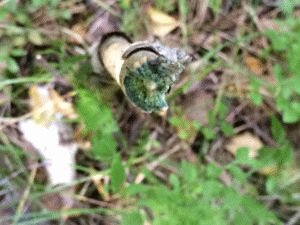
Bosse the Farmer
This exercise is a laboratory method of training how the numbers are built up, in this case number 5. Distribute one fence and five animals to each pair of children. Then have the children to think about how many different ways the animals can graze in Bosse the farmers’ two pastures.
If you want to extend the exercise you can have more pastures than two for the animals to graze in and have even more animals than five that are out grazing.
Material: Animals, fences (fences no need, two books can act as two different pastures)
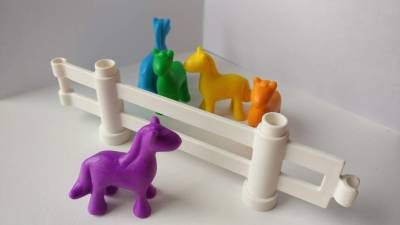
Thank you Nina for the idea from the blog Räkna med mig.
Volcanoes & Eruptions
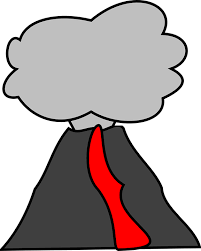 Volcanoes are always fascinating. Here are two variants.
Volcanoes are always fascinating. Here are two variants.
Baking Soda Volcano
Form a volcano of clay. Pour a couple of spoons of baking soda into the crater. Drop in a few drops of caramel color. Take a spoon or pipette and drop in a few drops of vinegar in the baking soda. When the vinegar is dropped into the baking powder, it starts to mill and bubble. The mixture of vinegar and baking powder is poured over the edge of the crater and floats out over the sides of the volcano.
Explanation: The baking powder is a carbonate and consists of salts. All carbonates develop carbon dioxide if poured on an acid, such as vinegar. The carbonate reacts with the acid, which creates the bubbles.
Developments of the experiment
- Will the volcanic eruption be the same if you pour the vinegar / vinegar first into the crater instead, and then the baking soda?
- Can the lava carry with you things that you put down in the crater? How heavy can they be? Sugar pellets, sprinkles, paper balls, Native American beads, wooden beads, what can we use?
The volcano in the bottle
Pour baking soda into a bottle (preferably transparent). Place the bottle on a tray. Pour the vinegar into a glass, add some detergent and some caramel color. Stir the mixture. Put the funnel on the bottle and pour into the solution.
Explanation: The vinegar reacts with the baking powder to form carbon dioxide. The detergent will make huge bubbles of carbon dioxide. The bottle becomes full of foam, which eventually overflows!
What Is Floating Where?
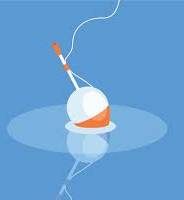 There have been some experiments with floating here. I’ll give you one more. Then I have something else up my sleave.
There have been some experiments with floating here. I’ll give you one more. Then I have something else up my sleave.
Does everything flow in all kinds of fluids, or is it that some things can flow in water, but not in other liquids?
To try it, you can do the following experiment:
Measure out so it is equal amounts of water, oil and syrup, and pour them into the large jar, one liquid at a time. For the sake of effect, it may have a point to start with water, then oil and lastly the syrup. The liquids will layer.
Now it is time to choose an object and make a hypothesis: ”Will the chosen object float in the oil, in the water or in the syrup?”
MATERIAL
A large glass jar
Cooking oil
Water
Syrup
Various items: grapes, screws, rubber bands, erasers, piece of candle, plastic and metal clips, large sequins, cork, coins, thumbtacks, pearl, nails, magnets …
Orange fireworks
Peel a clementine or an orange. Light a candle and let it burn a little. Take a piece of the peel and squeeze the yellow on the peel against the flame of the heating light.
What can you see? Which fruit creates the most fireworks?
Explanation
It is not only air in an orange peel, but there are also oils in the peel that you use when, for example. makes perfume. When you squeeze the peel against the flame, you release the oils in the shell that are ignited by the flame.
The idea comes from Louise Alfredsson at Nätraby School in Nätraby via www.lektion.se
How much can a magnet carry?
Make your own magnet
How strong is your magnet?
Hide the stone – with clues
Stimulate and challenge children in their mathematical development. Work with the mathematical area of locating by having children encounter different concepts and being challenged in formulating and listening to different concepts that indicate location.
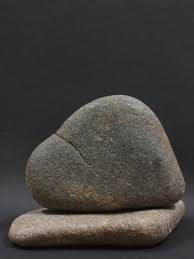
Procedure:
• The hider of the stone goes away and finds a good hiding place for the stone. When the stone is hidden, the hider goes to the other participants and gives them a clue, for example that the stone is under something high beside some brown.
• The participants must now observe the surroundings and try to find the stone.
• If more clues are needed, all participants are reassembled and the hider gives more descriptions, for example that the stone is below something high that is brown and green, next to something long and brown, rather than something narrow and green.
• Participants continue to search. When the stone is found, the participant who found the stone may hide it.
As an adult, it is important to support both the hider and the explorer in formulating and interpreting the concepts used.
Make a Balloon powered car
Maybe not to sooth down a group of children, but a lot of fun will be included in this: Make a Balloon powered car
Don’t forget to reason together afterwards of why things are happening.
Make Another Boat
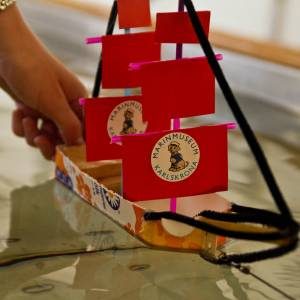 This is an experiment that shows that the shape of an object is important in order to get the object to float in water, but it is also an experiment that can be difficult for children to do themselves, as there are several steps to take into account and many instructions for getting a boat floating. When successful, it is very fun!
This is an experiment that shows that the shape of an object is important in order to get the object to float in water, but it is also an experiment that can be difficult for children to do themselves, as there are several steps to take into account and many instructions for getting a boat floating. When successful, it is very fun!
Mix all dry ingredients in a bowl, beat over the boiling water. Add the oil and caramel color, and quickly combine the ingredients into a dough. Allow to cool slightly before use!
Give the children a piece of dough and let them shape a boat as they like. Try it in the water and see if it floats. It probably does not, because the shape is so important for the flow properties of the clay (the clay has a higher density than water, and usually sink). In order for the clay to flow, it must be shaped like a coffee cup or a glass, ie as a vessel with high edges.
A further development is to let the children try to build boats of several different types of clay. Is there any mud that floats, no matter how you shape it, or is the shape of the boat equally crucial for all types of clay?
If you need is, here is a recipe on dough:
- 5 dl flour
- 5 cups of boiling water
- 2 dl salt
- 2 tablespoons citric acid / alum (can also be completely excluded)
- 1 tablespoon of oil (can also be completely excluded)
- Food Coloring if you like

 An experiment that contains both science and practical mathematics. Alex counted for 137 nails that stuck to the magnet and could certainly have counted longer if the nails in the box had not run out. Can all magnets hold the same number of things, or does it differ, and if so, why? Something to look into!
An experiment that contains both science and practical mathematics. Alex counted for 137 nails that stuck to the magnet and could certainly have counted longer if the nails in the box had not run out. Can all magnets hold the same number of things, or does it differ, and if so, why? Something to look into!